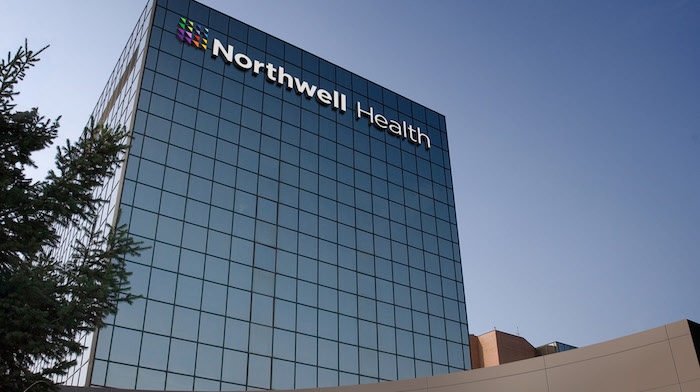Behind the Scenes: The Fits, Starts, and Successes of a Rebrand with the CMO of Northwell Health

“How do you position one of the nation’s largest health care systems for tomorrow’s care while retaining its roots in an industry defined by disruption?”
This was the question initially posed to the roughly 120 people tightly packed into Columbus Hall H for Justin Wartell and Ramon Soto’s speaking session on the giant transformation of Northshore-LIJ to Northwell Health at the 2016 SHSMD Conference.
So why change the largest health care delivery system in New York?
The catalyst for change was the desire for unity, to give employees a sense of pride in being part of something bigger and more connected, and to create an idea that could serve as the anchor point for everything we do both inside the organization and across the region. Thus, Northshore-LIJ set out to figure out what its brand was and how to make it work in a more meaningful and connected way in the real world.
How do you make change happen in a big, complicated organization?
As is the case with many large organizations considering a rebrand, there is a sense of organizational inertia. Before Monigle partnered with Northwell Health, the organization had been considering an organizational change for nearly 7 years!
Enter Northwell Health CMO, Ramon Soto.
Ramon, leveraging his experience outside of health care, brought a sense of inevitability associated with change. His role became as much a change agent, as a marketer. Ramon was able to get to a new name, sell it unanimously to a board made up of 126 members and launch the new brand all in the space of 8 months.
One of the keys to success was the people-first approach that Ramon adopted throughout the change process. As opposed to leaping immediately to external communications, Northwell ensured that its people understood the brand and could live its pillars every day.

“Brand is the promise and the delivery of the experience. If your people aren’t ready to deliver what the new brand means, there’s no point in spending tens of millions of dollars on defining and expressing a new brand promise. People have to experience it.” – Justin Wartell
How do you bring all these different stakeholders to yes?
“There was an enterprise-wide desire to get the brand to a new place,” Ramon explained. When consumers initially read Northshore-LIJ, they would say “Northshore Lidge” among many other incorrect pronunciations of the name. This acronym soup, built as hospitals and hospital systems came together was not clearly understood by people despite the strong reputation and innovative work that was happening. Ramon set out to build a team that had the energy to get this brand defined and to drive change forward.
Employee feedback at all levels informed the creation and operationalization of the new brand, ensuring that everyone’s voice was heard. Even though Northwell’s transformation was incredibly fast, they took the time to create the training modules for the brand story, visual expression, and the verbal identity to empower the right kinds of infectious, effective brand advocates. By building the modules, finding the right channels, and setting up a Brand Center, Northwell was able to create a solid base of internal brand champions months before the new brand was released to the public. After the initial launch, 65,000 employees became brand ambassadors that continued to propel the organization forward.
Having defined and launched the brand the focus shifted to how to bring it to life across the experience, and how to make it work in the real world. This last element is normally where brand work falls apart. It may sound great in the initial pitch or in the board room when you deliver the big idea, but you need to make sure the brand comes to life everywhere, not just from buildings to business cards, but also through a tangible experience that can be felt. By running processes concurrently with a variety of agencies focusing on both brand, naming and advertising, Northwell was able to expedite this transformation process but also to maintain coherence and connectivity.
With the belief that culture trumps strategy, and Ramon’s stance as a “coach” to his “brand players” across the organization, he was able to unleash the strengths of their different skill sets while also bringing in new perspectives.
How do you get people to buy-in?
Using a combination of quantitative and qualitative research, Northwell was able to deconstruct the initial perceptions that were getting in the way of people accepting the new brand – from the executive level to the front lines.
A lot of internal pushback focused on Northwell’s location on Long Island as a limiting factor. Through research, location was shown to be an insignificant factor in customer choice. Instead, innovation was found to be one of the unique top determinants of choice in the New York market, a trait uncommon to the rest of US health care decision-makers.
Using this insight-driven approach, Northwell was able to position its brand as the leader in innovation.
“As you think about how to make change happen, often it takes a single data point to get the executives to buy in and say yes,” explained Justin when discussing the socialization effort that was underway. By using the data to share targeted insights focused on debunking those paralyzing internal hypotheses, getting internal buy-in for the new name and brand became much easier.
To the packed conference room, the message was clear. Make change feel inevitable across the organization if change is on the horizon. Collect the data that makes it easier for stakeholders to say yes to that change. And, finally, make sure you’re ready to live that brand change before you start telling the world about it.
If Northwell Health could move 65,000 employees in a new direction, you too can turn your ship.
Learn more about the creation of Northwell Health’s brand here.
Philip Ward serves as Marketing Operations for Monigle and is passionate about helping develop cultures around brand.



